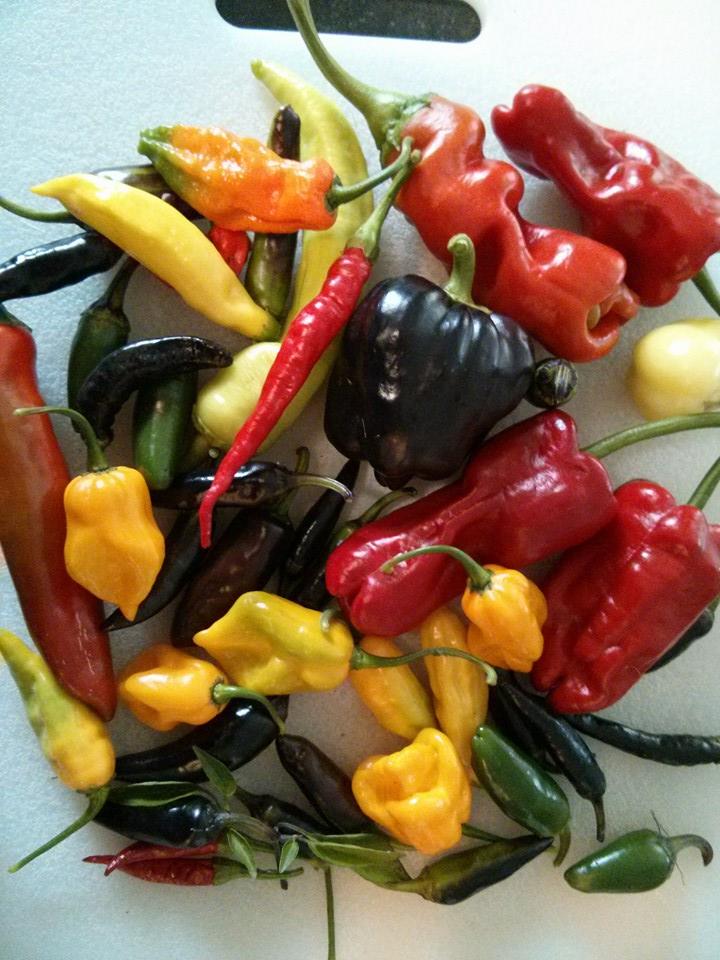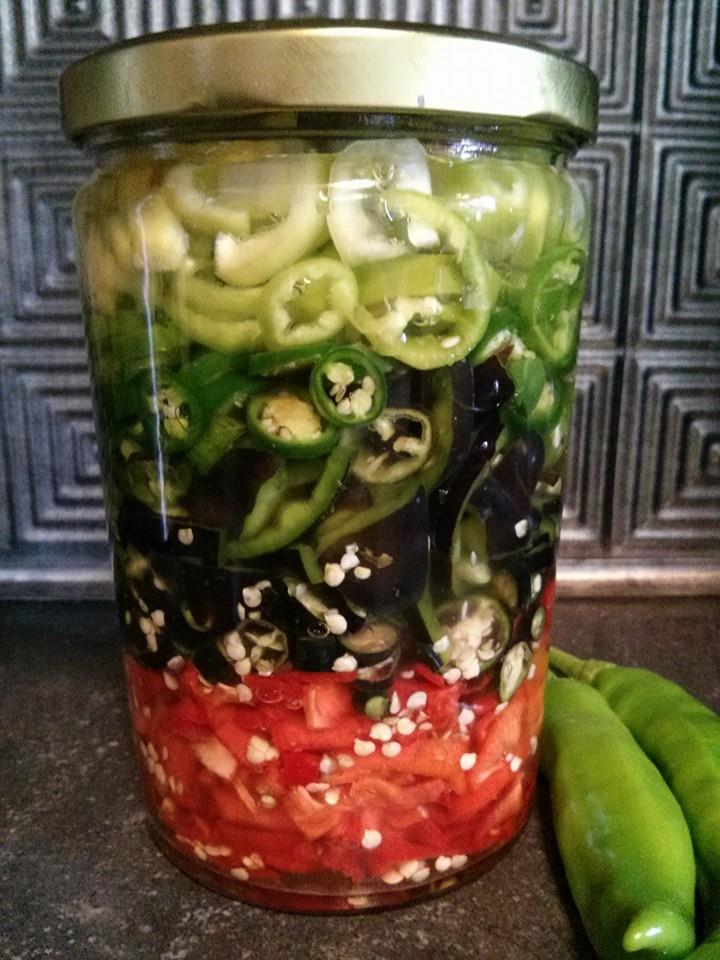Fermented Peppers
More Information

I’m still collecting peppers from the garden well into November, mostly hot peppers, which I LOVE!
I am lacto-fermenting these in a salt brine to enjoy throughout the winter!
I will add them to homemade Pizza, Nacho’s, into soups, fresh on top of salads or in sandwiches, any way I can really!
What is Lacto-Fermenting?
Before the advent of modern day canning most used the process of lacto-fermentation. Crocks of sauerkraut, lacto-fermented cucumber pickles and many more garden treasures such as beets, onions, peppers or garlic waited out the winter in root cellars. Often made with only a simple salt or whey brine, fermented foods can provide a vast array of health benefits!
The proliferation of lactobacilli in fermented vegetables enhances their digestibility and increases vitamin levels. These beneficial organisms produce numerous helpful enzymes as well as antibiotic and anti carcinogenic substances. Their main by-product, lactic acid, not only keeps vegetables and fruits in a state of perfect preservation but also promotes the growth of healthy flora throughout the intestine. (Nourishingdays.com)

Lacto-fermentation really is more art than science. The science part is simple: lactobacillus (from a prepared culture, fresh whey, or just naturally occurring) plus sugar (naturally present in vegetables and fruits), plus a little salt, minus oxygen (anaerobic process), plus time, equal lactic acid fermentation. The length of fermentation can vary from a few hours to two months or more. The temperature of the room where fermentation occurs will determine the length of time. The ideal temperature is around 72°F, but warmer or cooler temperature will still work. The length of time is dependent more on the flavor you prefer than anything else and since the flavor level of lacto-fermented vegetables increases with time you will want to sample often until you are experienced enough to know what works for your tastes. Lacto-fermentation is generally done in an airtight container or a crock with a water seal that prevents air from contaminating the culture. If you have a reliable recipe to follow, you can make minor adjustments as you see fit.
The important thing is not to be intimidated by lacto-fermentation. You are not going to make your family sick by giving them home-fermented foods. Unless it smells unmistakably putrid (in which case common sense says throw it away), fermented foods are some of the safest foods you can eat. They are easy for even a beginner to prepare and it doesn’t take long to gain enough confidence to venture beyond basic yogurt or sauerkraut to an endless variety of vegetable and/or fruit combinations.
(http://www.culturesforhealth.com/what-lacto-fermentation/)
